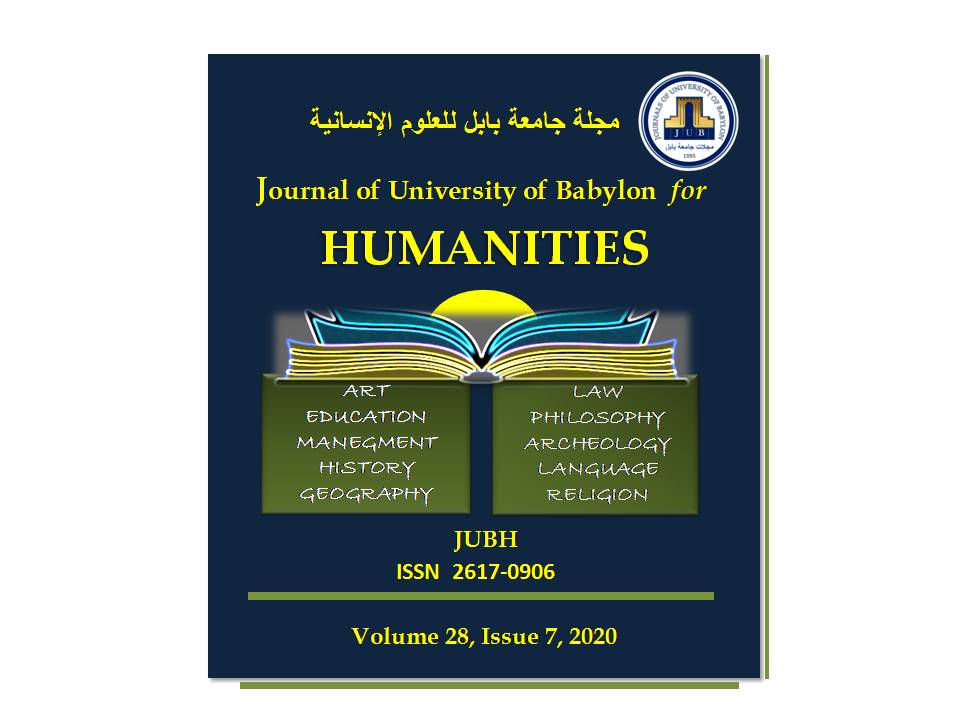Ishraqat Sufism in Iraqi Theatrical Discourse
Main Article Content
Abstract
Sufism represents a stage of religious awareness rooted in the human self, as it is a form of worship that seeks the divine self and found its echo in theatrical discourse. The extension of its thought and its interference in the theater is not strange. The current research contains four chapters. The first chapter deals with the research problem represented in the following question:
Did the brilliance and independence of Sufi thought as an intellectual current extend the theatrical discourse with new interpretations and spaces that gave it an added aesthetic dimension?
As for the second chapter, it included the theoretical framework and previous studies and included two topics. The first concerned with the concept of Sufism and its references and crystallized this concept and introduces it, while the second dealt with the Sufi performances in theatrical discourse and the mechanism of its brightening. The chapter focused on previous studies and their discussion and indicators that resulted from the theoretical frameworkThe chapter also included (the importance of research) by shedding light on the study of benefit and the work on the subject of Sufism in theatrical discourse, and the chapter also contained (the aim of the research), which was limited to identifying the radiance of Sufism in the theatrical discourse and included the chapter on the limits of research that were defined in the period (1983-) 2012) and spatially, the theatrical performances presented in (Iraq) and (Jordan). As for thematically, the study focused on Sufism and its shinning in theatrical discourse.
While the third chapter included (research procedures) represented by the research community and its samples that were chosen in an intentionally based manner based on the theoretical framework indicators by being an analysis tool within a descriptive (analytical) approach and viewing the performances so that the two theatrical performances were analyzed (Tawasin and Nuriyyah), while the fourth chapter came with the results and then concluded Chapter of conclusions, recommendations and proposals.

